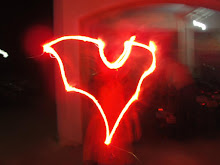The Thiruvannamalai mountain
 Thiruvannamalai
Thiruvannamalai is a place, the beauty, history and magnificence of which can be spoken about and written in multitudes of episodes over a long period of time. To speak about the place in a single post exhibits my ignorance, of the many features of Thiruvannamalai which would make one astounded in awe and submit to the will of the Supreme Power. Honestly, even to see the tip of the iceberg, one has to stay in the place for atleast a month, covering one place at a time out of the many.
The Rajagopuram

Thiruvannamalai is one of the five "Pancha Bhootha Sthalas", the shrines of the five elements. It represents the element of Fire. The mountain itself is considered to be a form of Lord Shiva. It is why the pilgrims perform
Girivalam or the circumambulation of the mountain. In an outline, Thiruvannamalai has one of the biggest temples ever built in Tamilnadu,the Arunachaleswarar Temple, it has the ashrams of Sri Ramana Maharishi, Sri Seshadri Swamigal, Yogi Ram Surat Kumar, the Ner Annamalai Temple, the Aadi Annamalai Temple and the eight shrines around the mountain where the
Ashtadhik Balakaas or the guardians of the eight principal directions offered their prayers to Lord Shiva by creating Lingas.
I had earlier visited Thiruvannamalai twice, once when i was a child, my mom says and the other was quite recently, probably 3 years back. But back then, all i knew was to worship the Lord and look at the architecture in awesome reverence for the Sthapathis(architects) who had built this great temple. I didn't have this blog nor was i good enough in capturing photographs. But thank God, this time, it was a very beautiful experience. The security had been tightened up. They did allow photographic capture of the architectural beauty although its tacit that the main shrines are not to be photographed by anyone. My joy knew no limits but yet again, this time, it was a very quick visit that I seem not to have finished even one-fourth of what i had in mind.
The Nandi just after entering the temple from the East

From time to time, I stop my thinking to see if i'll ever be able to say all i have , in one post. We reached the temple at around 11 am and were actually running late. So we hurried up to see the main shrines of Lord Annamalaiyar and Goddess Unnamulai Ammai. We stopped in the shrine of Vinayaka, said a quick prayer and hurried towards the sanctum sanctorum. We finished the darshan of Lord Annamalaiyar and Goddess Unnamulai Ammai and then took rounds around the temple, seeing the other shrines of the Utsavar, Lord Vinayaka, Lord Subrahmanya, Lord Bhairava, the navagraha and the Sthala Vriksham(temple tree), a
Magizham tree, Mimusops elengi, the temple site
www.arunachaleswarar.com says. There are two ponds inside the temple complex, the Sivagangai Theertham and the Brahma Theertham. In a very special sight, near the Navagraha, is a shrine for the Chitra Guptas, the chief accountants of Yama loka, who weigh the goods of every soul against its bads.
Visting the sprawling prakarams inside the temple complex, i realised that my knowledge about prakarams, whatsoever, was very minute. Thiruvannamalai is one of the largest temples, ever built, covering a land area of nearly 32 acres. And to cover it and get enraptured in the beauty of the entire temple in a day is too much to ask for.
The exquisitely carved temple walls

Around the Arunachaleswarar temple are the eight lingas that one comes across when performing the Girivalam. They are
- Indra Lingam to the east
- Agni Lingam to the southeast
- Yama Lingam to the south
- Niruthi Lingam to the southwest
- Varuna Lingam to the west
- Vayu Lingam to the northwest
- Kubera Lingam to the north
- Isanya Lingam to the northeast
Each deity namely Indra, Agni, Yama, Niruthi, Varuna, Vayu, Kubera and Isanya are the guardians of the respective directions. In addition to the eight lingas, there is also a Surya Lingam. From the shrine of the Niruthi Lingam, when you look at the mountain, you see the face of Nandhi. Its so hair-raising to see the face of the bull emerge from the mountain. And there is also a place called the Pancha Mukha Darisanam. Its a place from where the mountain is like Lord Shiva resting on His back. The mountain resembles a huge form, with a head, chest, body, a raised knee and finally the erect foot. Like this, the mountain remains a mystery at many other places, some known, many unknown.
The Ner Annamalaiyar Temple: Along the Girivalam, is a temple, called the Ner Annamalaiyar Temple. From this temple, one gets a full view of the mountain in a straight line of sight. Hence the name Ner Annamalaiyar Temple. Ner in Tamil means Straight.
The view of the mountain from the Ner Annamalaiyar Temple

All along the way, one can see many Nandhis, the vehicle of Lord Shiva, sitting facing the mountain. This also says the mountain itself is a form of Lord Shiva. Thiruvannamalai is also the home to hundreds of seers and siddhas, who live in the mountain and live on the offerings of the pilgrims, chanting the Lord's name.
Though the visit was a rapid and a short one, it was a very memorable one. Many thanks to the Lord. As is said in Thiruvasagam's Sivapuranam, "
Avan arulale avan thaal vanangi"(To worship His feet by means of His own Grace), even to worship God you need His grace. I plan to visit the temple again, a well planned and a longer one.




















